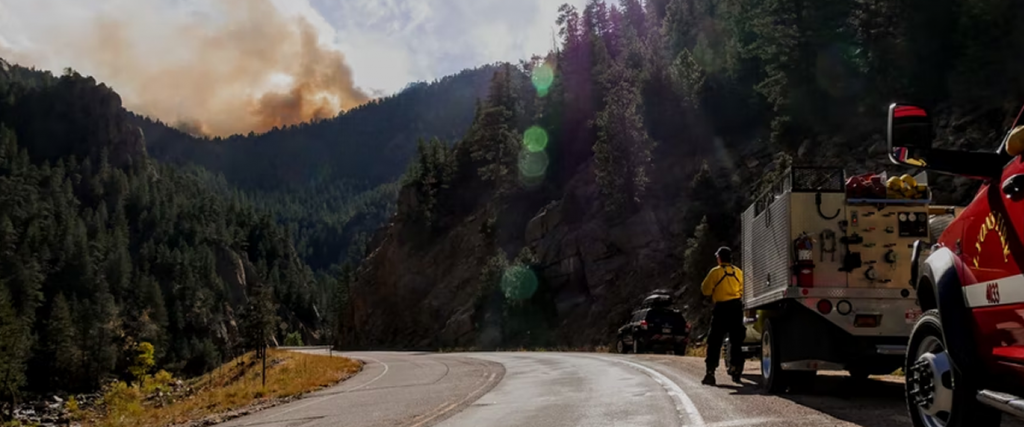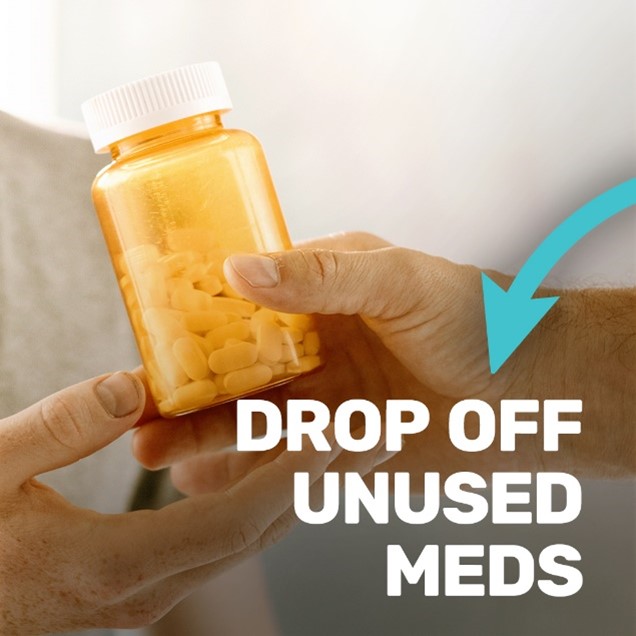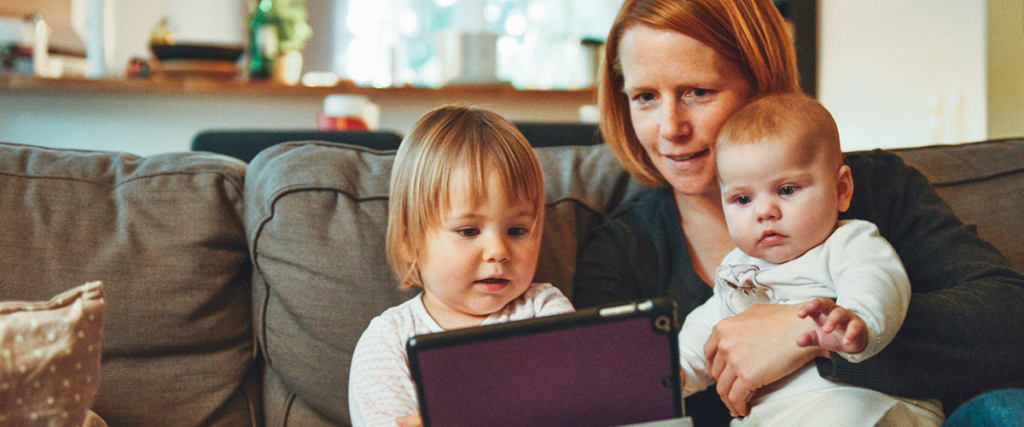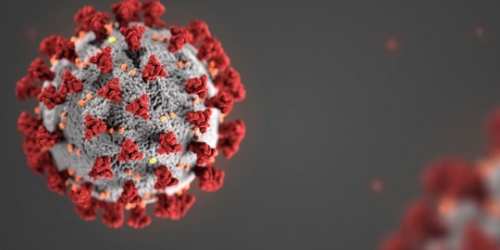Category: Safety
Smoke Ready Idaho

Wildfire smoke will likely be with us through the summer and into the fall. Here’s what you need to know.
Wildfire smoke can cause irritating symptoms for healthy people and more serious health issues for people with respiratory problems and heart and lung disease. It’s important to know how to protect yourself and your family from smoky air whenever possible.
Who is most at risk for the harmful effects of smoke?
Infants and young children suffer more from the effects of smoke because they breathe more air than adults for their body size. Older adults and people with lung and heart conditions are also especially sensitive to smoke in the air. Even low levels of smoke can cause breathing problems for sensitive groups with asthma, COPD, emphysema, and other chronic lung diseases. In addition, smoke can increase the risk of heart attack or stroke for people with chronic heart conditions and can increase the risk of premature birth in pregnant women.
When should we become concerned about the symptoms of smoke exposure?
Common effects of smoke exposure include irritated eyes, nose, and throat. However, you should call your doctor immediately if you have shortness of breath, chest pain or tightness, headaches, fatigue, or a combination of those symptoms that become severe.
What if I have an event outside or my child has a game we can’t miss, and the air quality is low?
Visit the Idaho Department of Environmental Quality’s air quality website or the Idaho Smoke Information Blog to check local smoke conditions. Download the AIR Idaho application on your mobile device for current smoke conditions in your area. The Department of Health and Welfare also provides activity guidelines for outdoor events and other resources to help determine your risk level. If an outdoor event or game isn’t canceled because of smoke conditions, drink plenty of water and do your best to limit your time outside. If smoke-related symptoms become difficult or get a lot worse, move indoors. Your family’s health is more important than a sporting event.
Should we consider wearing masks when conditions are poor?
While the most effective way to protect yourself from smoke is to stay indoors, we recognize this is not always possible. People who must be outside in the smoky air may benefit from wearing “particulate respirators” or N95 respirators. Respirator masks worn correctly may provide protection by filtering out fine particles in the smoke. However, many people find it difficult to wear a mask correctly. If a mask does not fit properly, it will provide little or no protection. For some, masks can make it harder to breathe normally. It is a good idea to check with your health care provider before using any mask.
How can we limit our exposure to smoke?
When conditions are poor, you should reduce your time and activities outside as much as possible. Stay indoors, in an air-conditioned area, if you can. If you don’t have air conditioning, go someplace that does, like the mall or library. Otherwise, there are several things you can do to limit the smoky air you breathe:
- Keep your windows and doors closed.
- If you have central air conditioning, use an air filter rated MERV 8 or higher and turn the system fan on.
- If you must drive in smoky areas, keep all windows closed and turn the vehicle airflow to recirculate to reduce the amount of smoke in the vehicle. Use caution and slow down when driving in smoky conditions.
- Do not add to smoky conditions (e.g., burn candles, use propane/wood-burning stoves, aerosol sprays, smoke tobacco products, or vacuum. All of these and more can increase air pollution indoors.
- Change air-conditioning filters more frequently as they may become clogged or dirty.
- Use portable air clearers to reduce indoor air pollution.
- Pay attention to local air quality reports and health warnings.
Where do I go for more information?
Please visit the resources listed below for up-to-date information on smoke conditions and resources on how to stay healthy during wildfire smoke events:
- Idaho Health and Welfare Wildfire Smoke
- Guide for Staying Healthy During Wildfire Smoke
- AirNow
- Department of Environmental Quality Smoke Information
- Washington State Department of Health Wildfire Smoke and Face Masks
Brigitta Gruenberg is the Environmental Health Program Manager for the Department of Health and Welfare.
The Idaho Department of Health and Welfare is dedicated to strengthening Idahoans’ health, safety, and independence. Learn more at healthandwelfare.idaho.gov.
National Prescription Take Back Day on April 24

On April 24th, the Drug Enforcement Administration (DEA) and its state and local partners will hold the 20th National Prescription Drug Take Back Day. The DEA began the initiative in 2010 to provide easy, anonymous opportunities to remove medicines in the home that are highly susceptible to misuse, abuse, and theft. The Idaho Office of Drug Policy, local Law Enforcement, and prevention partners are hosting Take Back Day collection site events in communities across Idaho on April 24th from 10am to 2pm. You can find events in your area by using the collection site locator tools at takebackday.dea.gov and odp.idaho.gov/prescription-drug-take-back-program.
The events will allow Idahoans an opportunity to safely dispose of any unused or expired prescriptions and help prevent drug misuse in our state. All COVID-19 safety measures will be in place, and individuals will be able to simply drive through and drop off their medications. All prescription meds will be accepted, as well as over-the-counter and veterinary medications. Take Back Day collection sites will also accept vape pens, cartridges, or other e-cigarette devices (without the batteries in the device). Needles will not be accepted.

In 2019, over 60,000 Idahoans aged 12 and older misused prescription pain relievers according to the National Survey on Drug Use and Health. Furthermore, results from the 2019 Idaho Youth Risk Behavior and Idaho Healthy Youth Surveys found that nearly 23% of Idaho 12th graders reported misusing a prescription drug one or more times in their life. While a majority of youth did not report misusing prescription drugs, of those that did, over 41% took or received them from a family member or friend, and over 60% misused the medication in their own home.
When left in a medicine cabinet, thrown away or flushed, unused prescriptions can be dangerous to people, animals, or the environment. Help keep our community safe and healthy by dropping off your old medication on Saturday, April 24th.
If you miss your local Take Back Day and need to dispose of prescription medications, find year-round drop off locations online at odp.idaho.gov/prescription-drug-take-back-program.
Asking for Help is a Strength

By: Roger Sherman, Executive Director of Idaho Children’s Trust Fund
Phew. This has been a year that we will not soon forget. Our work lives have been stressful as we have adapted to working at home. And then, for many of us, we have had to adapt our parenting to accommodate the new norm of online schooling. It has been very hard to find balance between our work and our personal lives.
As the pandemic hit, many of us who are concerned about children’s well-being worried that families would struggle with the isolation and having children at home. We certainly know some of them have and all of us parents have likely felt overwhelmed at times.
We know there have been more than normal infant deaths caused by abuse and FACES has had to respond to more severe cases of abuse than is typical. How to respond?

As the designated child abuse prevention organization for Idaho, the Idaho Children’s Trust Fund, which is also the state affiliate of Prevent Child Abuse America, knew we had to do something to support parents and families. We started working with St. Luke’s Community Health and that soon blossomed into a coalitional effort with Saint Alphonsus, the Idaho Academy of Pediatricians, district health departments, Idaho Voices for Children, childcare and public health divisions within the Department of Health and Welfare.
Working with the communications company 116 and West, we have created a multi-media campaign that we need your help to circulate. The campaign focuses on encouraging parents (including ourselves) to ask for help when they feel overwhelmed and provides them with a call-in number and a resource page to seek help. This will only work if we all get behind it.
While the campaign has some funding to pay for media and some goodwill from the network stations, we are hoping that state employees, the largest workforce in the state, along with employees of the hospitals, Micron and others can use the power of social media to spread the word that asking for help is a strength.
Here’s the pitch: None of us are perfect parents/We all struggle/We all need help sometimes/That’s why we’re here. Call the HelpNow line or go to www.idahofamilysupport.org for resources.
Can you put this out on your Facebook, Twitter and Instagram? Can you send it out to your family, friends and neighbors? We have static images that you can use. Email me at roger.sherman@ctf.idaho.gov.
Let’s become an army of mandated supporters!

Radon: Fact or Fiction

By: Hannah Day, Health Education Specialist, Environmental Health Program, Idaho Department of Health and Welfare
January is National Radon Action Month
Have you ever heard of radon gas? Did you know radon is present in many Idaho homes? The Environmental Health Program within the Division of Public Health manages the Idaho Radon Program and can help separate radon facts from fiction and keep your family healthy.
FACT: All homes should be tested for radon.
Radon is a naturally-occurring radioactive gas that you cannot see, smell, or taste. It enters homes through gaps or cracks in the foundation. All homes, even new builds and those without basements, can have high levels of radon gas. With many Idahoans working from home due to the COVID-19 pandemic, our risk of exposure to radon is increased as most of our work and personal life is now spent within the home.
Testing is easy and is the only way to know if you are being exposed to radon in your home. It is recommended to test your home every two years or after any remodeling.
How to find a test kit: Contact your local public health district – they have free short-term test kits to give away. You can also order a short-term test kit for $10 from www.radonidaho.org.
MYTH: Radon is not an issue where I live.
Two out of every five tested homes in Idaho have tested high for radon. In fact, high radon levels have been found in every county in the state. To learn more about radon levels where you live, please visit www.radonidaho.org and view the interactive map.
MYTH: Radon is not harmful to my health.
Long-term exposure to radon gas is known to cause lung cancer. Radon is the leading cause of lung cancer in non-smokers. To learn more about the health effects of radon, visit the Environmental Protection Agency’s (EPA) Health Risk of Radon website.
FACT: Winter is the best time to test a home for radon.
Radon levels can change by season and with the weather. The highest levels of radon are found during winter months when homes get less fresh air. To learn more about radon testing and how to respond to a radon problem, visit www.radonidaho.org.
FACT: A Radon problem can be fixed!
Radon mitigation systems can effectively reduce the levels of radon in a home. The Idaho Radon Program recommends hiring a nationally-certified radon professional to fix your home. To locate a radon professional, visit www.radonidaho.org.
For more information, contact the Idaho Radon Program: 1-800-445-8647 or radon@dhw.idaho.gov.
Healthy and Safe Halloween

Many traditional Halloween activities can be high-risk for getting or spreading COVID-19. There are several safer, alternative ways to participate in Halloween this year. Please consider some fun, lower-risk alternatives this year.
If you do not feel well, have a respiratory or gastrointestinal illness, or may have been exposed to someone with COVID-19, you should not
participate in in-person Halloween festivities, and should not give out candy to trick-or-treaters.
Low Risk Activities
These lower risk activities can be safe alternatives:
- Carving or decorating pumpkins with members of your household and displaying them
- Carving or decorating pumpkins outside, at a safe distance, with neighbors or friends
- Decorating your house, apartment, or living space
- Doing a Halloween scavenger hunt where children are given lists of Halloween-themed things to look for while they walk outdoors from house to house admiring Halloween decorations at a distance
- Having a virtual Halloween costume contest
- Having a Halloween movie night with people you live with
- Having a scavenger hunt-style trick-or-treat search with your household members in or around your home rather than going house to house
Moderate Risk Activities
- Participating in one-way trick-or-treating where individually wrapped goodie bags are lined up for families to grab and go while continuing to social distance (such as at the end of a driveway or at the edge of a yard)
- If you are preparing goodie bags, wash your hands with soap and water for at least 20 second before and after preparing the bags.
- Having a small group, outdoor, open-air costume parade where people are distanced more than 6 feet apart
- Attending a costume party held outdoors where protective masks are used and people can remain more than 6 feet apart
- A costume mask (such as for Halloween) is not a substitute for a cloth mask. A costume mask should not be used unless it is made of two or more layers of breathable fabric that covers the mouth and nose and doesn’t leave gaps around the face.
- Do not wear a costume mask over a protective cloth mask because it can be dangerous if the costume mask makes it hard to breathe. Instead, consider using a Halloween-themed cloth mask.
- Going to an open-air, one-way, walk-through haunted forest where appropriate mask use is enforced, and people can remain more than 6 feet apart
- If screaming will likely occur, greater distancing is advised. The greater the distance, the lower the risk of spreading a respiratory virus.
- Visiting pumpkin patches or orchards where people use hand sanitizer before touching pumpkins or picking apples, wearing masks is encouraged or enforced, and people are able to maintain social distancing
- Having an outdoor Halloween movie night with local family friends with people spaced at least 6 feet apart
- If screaming will likely occur, greater distancing is advised. The greater the distance, the lower the risk of spreading a respiratory virus.
- Lower your risk by following CDC’s recommendations on hosting gatherings or cook-outs.
Higher Risk Activities
Avoid these higher risk activities to help prevent the spread of the virus that causes COVID-19:
- Participating in traditional trick-or-treating where treats are handed to children who go door to door
- Having trunk-or-treat where treats are handed out from trunks of cars lined up in large parking lots
- Attending crowded costume parties held indoors
- Going to an indoor haunted house where people may be crowded together and screaming
- Going on hayrides or tractor rides with people who are not in your household
- Using alcohol or drugs, which can cloud judgement and increase risky behaviors
- Traveling to a rural fall festival that is not in your community if you live in an area with community spread of COVID-19
Centers for Disease Control “Holiday Celebrations”
Central District Health “COVID-19 and Halloween Safety”
National Prescription Drug Take Back Day

National Prescription Drug Take Back Day
October 24, 2020 at 10:00 am – 2:00 pm
Across the country, an estimated 9.9 million Americans misuse prescription drugs, and studies show that a majority of abused prescription drugs are obtained from family and friends, often from the home medicine cabinet1. To help prevent misuse of prescription drugs, the Drug Enforcement Agency (DEA), along with its state and local partners, hold National Prescription Drug Take Back Day events each spring and fall across the country to provide an opportunity for Americans a safely and securely dispose of unused and expired prescription medication.
The next National Prescription Drug Take Back Day is Saturday, October 24, 2020 from 10am-2pm, and the Office of Drug Policy (ODP) is encouraging local organizations across the state to coordinate Take Back Day events in their communities to help Idahoans properly dispose of medications and prevent prescription drug misuse in our state. To help organizations plan Take Back Day activities, ODP put together an Event Planning Toolkit with step-by-step planning instructions, promotional materials, how-to guides, and helpful tips to successfully organize and advertise the event throughout the community.
On the last National Take Back Day in 2019, there were 38 Take Back Day events across Idaho and 5,402 pounds of drugs collected. This October, our goal is to increase those numbers by 25% and organize at least 47 Take Back Day events and collect at least 6,752 pounds of drugs statewide.
Together, we can reach our goals and help prevent prescription drug misuse in Idaho. To learn more about National Prescription Drug Take Back Day and find a local Take Back Day even in your community, visit https://takebackday.dea.gov.
Return to Work
As we follow the Governor’s Stay Healthy Order, let’s review how we can stay healthy and safe during our return to a new normal in the workplace. It is important that we all do our part to follow CDC guidelines to prevent the spread of COVID-19.
- Hand Hygiene
- Wash your hands often with soap and water for at least 20 seconds.
- If soap and water are unavailable, use a hand sanitizer that contains at least 60% alcohol.
- Physical Distancing
- Avoid close contact and maintain at least 6 feet physical distance from others whenever possible.
- Limit the number of riders in elevators at one time. Wait for the next cart or take the stairs instead if the elevator prevents you from maintaining physical distance.
- Do not congregate in shared areas like breakrooms and take turns using shared spaces.
- Limit the number of individuals in the bathroom at one time and try to stagger usage.
- Cleaning
- Clean and disinfect frequently touched surfaces at least once a day. This includes doorknobs, light switches, handrails, handles, desks, phones, keyboards,
- Stay Home if You Feel Sick
- If you do feel sick, please stay home to prevent spreading illness to others in the workplace.
- Wear a Mask
- Wear a mask or face covering in public spaces.
- When we talk and breathe, we spread germs into the air. It is possible that we are spreading illness to those around us without even knowing it. Face masks act as a physical barrier to prevent your germs from making someone else sick. Your mask should fit snugly around your face and cover both your nose and your mouth.
Resources:
Novel Coronavirus: Know the Facts

PLEASE NOTE: This blog post was originally published on February 28, 2020. For up-to-date information about the coronavirus/COVID-19 please visit coronavirus.idaho.gov.
By: Dr. Eileen Dunne, Epidemic Intelligence Service Officer with the Centers for Disease Control and Prevention, assigned to the Idaho Department of Health & Welfare
Public health agencies worldwide are responding to an outbreak of respiratory disease caused by a novel coronavirus that was first detected in Wuhan, China. The disease caused by this novel coronavirus is known as COVID-19.
What is novel coronavirus?
Coronaviruses are a large family of viruses, some of which cause illness in people and some that are found in animals. The coronavirus that causes COVID-19 hasn’t been seen in people before, so it is called new (novel). There are other known human coronaviruses that cause mild respiratory illnesses like the common cold, especially in fall and winter. The novel coronavirus is thought to have come from an animal in China and then spread between people. The exact source is currently unknown.
How does coronavirus spread?
Coronaviruses spread from person to person. Someone who has COVID-19 can spread the illness to others by coughing or sneezing, in the same way influenza and other respiratory infections are spread. Other means of spread are possible but are not thought to be the main reason for rapid spread of novel coronavirus.
What is the coronavirus concern for Idaho?
The risk to the general population in Idaho is currently low, but not zero. Community spread in countries outside of China is concerning. More cases are expected to be identified in the United States, and person-to-person spread might occur. Idaho public health officials are monitoring the situation very closely and working with federal, state, and local partners. We are prepared to respond if someone is sick or has been exposed.
Coronavirus vs. influenza – what’s a bigger risk?
To date, fewer than 100 cases of COVID-19 and no deaths have been detected in the United States. In contrast, seasonal influenza (flu) causes millions of infections and kills more than 10,000 Americans each year. Flu activity is currently high. During the 2019-2020 influenza season to date, 18 influenza-related deaths have occurred in Idaho.
What people can do to protect themselves?
Although the risk of COVID-19 in Idaho is currently low, we’re asking everyone to follow the normal precautions for avoiding respiratory diseases – stay home if you’re sick, avoid sick people, and cover your coughs and sneezes. If you have recently returned from an area with widespread community transmission (see CDC travel advisories at https://wwwnc.cdc.gov/travel/notices) and you feel sick with a fever, cough, or difficulty breathing, seek medical care. Before you go to a doctor’s office or emergency room, call ahead and tell them about your recent travel and your symptoms.
If you haven’t got your flu shot yet this season, there is still time!
Will coronavirus affect my travel plans?
CDC has issued a warning to avoid nonessential travel to certain countries including China. CDC recommends that people reconsider travel by cruise ship to or within Asia. CDC has also issued travel alerts for several other countries because of community spread of the virus that causes COVID-19. Check CDC travel health notices before planning international travel.
What about other people who have recently traveled?
Some travelers returning from China or certain cruise ships have been subject to monitoring by public health officials or isolated for up to 14 days since their last exposure to the virus that causes COVID-19. People who have completed monitoring or been released from isolation pose no risk of spreading the virus to others.
Where should people go for valid information?
CDC updates its website nearly daily with the latest information. The World Health Organization also is a trusted source of information about COVID-19. See WHO COVID-19 myth busters at https://www.who.int/emergencies/diseases/novel-coronavirus-2019/advice-for-public/myth-busters.
For information on COVID-19 in Idaho, see the novel coronavirus page on the DHW website, https://healthandwelfare.idaho.gov/health-wellness/diseases-conditions/covid-19.
 Official Government Website
Official Government Website
